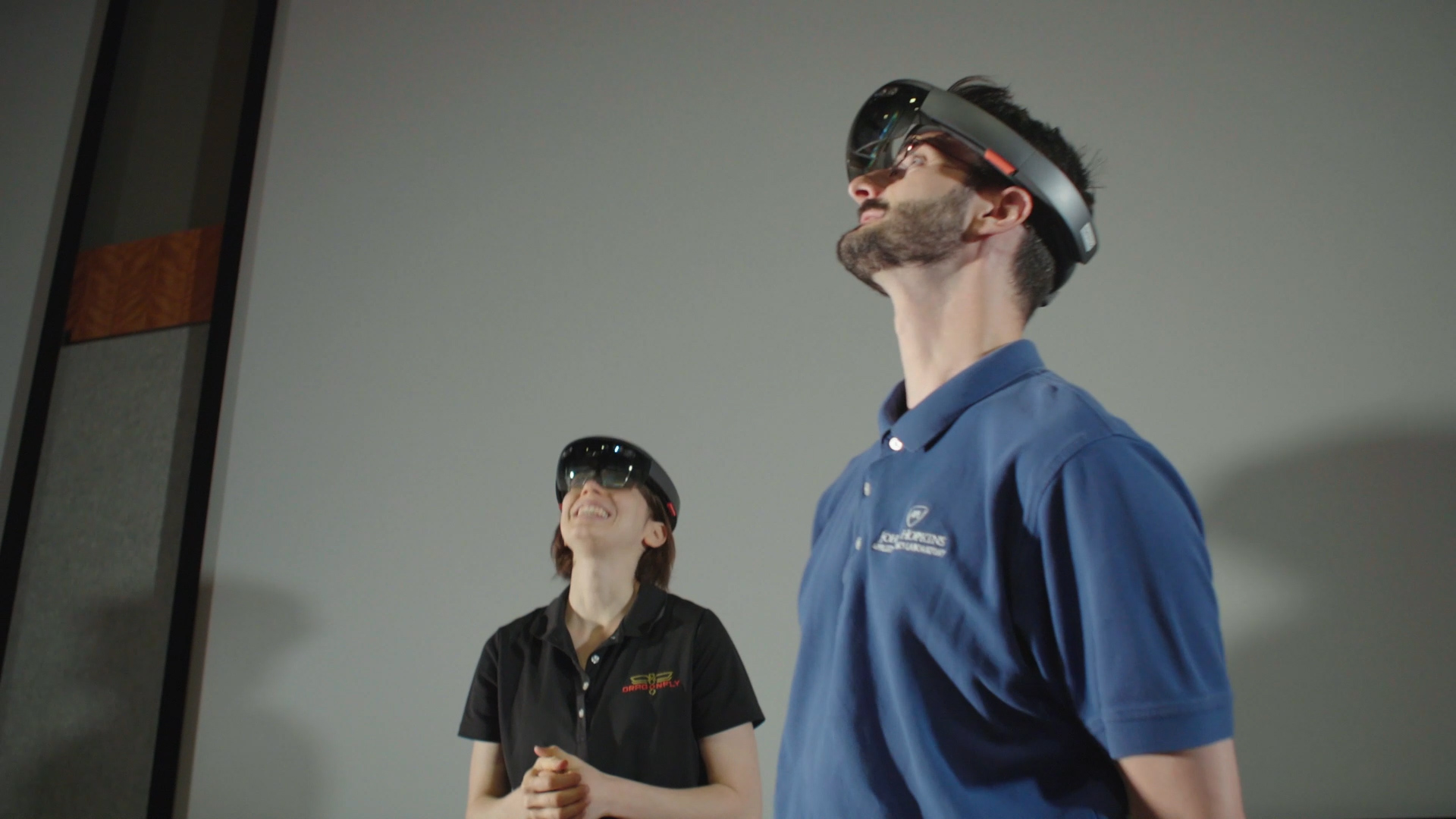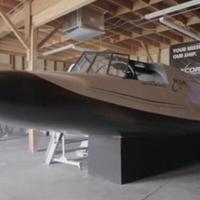Initiated in 2002, the New Frontiers Program is designed to join the expertise of researchers at universities and private research institutes with NASA to expand and improve our knowledge of the solar system.
NASA’s New Frontiers aims to explore a variety of locations and objects within our solar system that have been prioritized based on a list of questions and goals. Locations include Titan (by way of the NASA Dragonfly), Jupiter, Pluto, Kuiper Belt objects, Venus, and the moon’s south pole.
With a keen curiosity to learn more about how life potentially formed on Earth, NASA has partnered with researchers at the Johns Hopkins University Applied Physics Laboratory. Together, they have set their sights on Saturn’s largest moon, with plans to send the Dragonfly to Titan in 2026, and they’re using augmented reality and virtual reality to make it all happen.
AR (augmented reality) adds digital elements to our live world, combining the two realities into one.
Engineers at Johns Hopkins University Applied Physics Lab are using VR to train personnel and prepare them for the conditions they’ll face on Titan, while AR allows teams to iterate on the Dragonfly’s design, see wiring and other elements behind panels, and create efficiency throughout the process.
What is the NASA Dragonfly?
The Dragonfly is the key component to NASA’s Titan mission. Using both augmented reality and virtual reality, researchers at the Johns Hopkins University Applied Physics Laboratory are working diligently to design and engineer the spacecraft.
The Dragonfly is an octocopter featuring four helicopter-like blades along both of its sides. The spacecraft’s unique arrangement of blades lend the vehicle the appearance of having wings similar to a dragonfly’s.
While in flight and when planted on Titan’s surface, the NASA Dragonfly will be looking for the building blocks of life, signs of previous life, or evidence of extant life. The Dragonfly will be fully equipped with all the tools and equipment needed to visit a variety of sites, gather samples, analyze and collect data, and transmit the information back to Earth.
The Necessity of the Titan Mission
Nestled within its dusty, icy rings, a total of 82 moons orbit Saturn. So, why is the Nasa Dragonfly going to Titan, specifically?
Among all the solar system’s icy, rocky moons, Titan is unique in that it has a dense atmosphere. Like Earth’s, Titan’s atmosphere supports a hydrological cycle of evaporation, clouds, rain, and liquid flowing over its surface. It’s also an oceanic world, rich with complex organic materials, like methane.
Titan’s atmosphere supports a hydrological cycle, just like Earth’s, making it an important destination in the search for extraterrestrial life.
These unique features make Titan an attractive destination, not only in the search for life beyond our planet, but also in the search to understand how life forms, what makes an environment habitable, and the conditions necessary to support life.
While the discovery of any life form thriving beyond Earth would be both a scientific and existential breakthrough, the endeavor for NASA’s Dragonfly is that its discoveries will ultimately help us better understand our own planet.
“We can’t go back in time on Earth and learn the lessons about the chemistry that eventually led to life, but we can go to Titan and we can pursue those questions,” said Curt Niebur, scientist for New Frontiers at NASA.
Scientists hope the data gathered on Titan will reveal much more information about the conditions and types of chemical interactions that existed on Earth before life formed. In other words, NASA hopes to answer the question regarding how organic chemistry became biology.
How VR and AR Have Become Central to NASA’s Most Ambitious Plans
Engineers at Johns Hopkins University Applied Physics Lab, who are leading the development of NASA’s Dragonfly, are using VR and AR extensively in their work. VR is used to train personnel and prepare them for the conditions they’ll face on Titan, while AR allows teams to iterate on the design, see wiring and other elements behind panels, and create efficiency throughout the process.
With AR and VR, engineers are able to take a collaborative, hands-on approach to designing not only the Titan spacecraft, but also practice the mission itself – before the Dragonfly has even been physically constructed.

In the past, physical models of spacecraft have been constructed, tested, and modified in order to achieve the optimal design based on a proposed mission plan. Without augmented reality technology, there was no alternative to this costly and time-consuming process.
Virtual reality, as it’s being applied to the Dragonfly, however, has bridged the gap between mechanical design and mission design, allowing engineers and scientists to collaboratively address both challenges simultaneously.
Using VR, the team on Earth will be able to directly interact with the environment on Titan, making operational decisions in real-time.
The NASA Dragonfly and its hardware do not yet physically exist, but with the use of virtual and augmented reality models, engineers and scientists are already able to interact with the spacecraft, simulate flights in Titan’s atmospheric conditions, troubleshoot mechanical problems, and make design improvements.
As a result, they’re achieving major cost savings, time savings, and reducing the overall project risk. In addition, the ability to design the mission and make operational plans before take-off greatly increases the mission’s odds of success.
Apart from these preliminary benefits that directly affect engineering and design, virtual reality at NASA will also be used extensively during Dragonfly’s mission on Titan. By transforming two-dimensional data into a three-dimensional, immersive reality, VR enables a team of scientists to be on Titan without having to make the actual eight-year journey themselves.
As the Dragonfly transmits a continuous stream of data to Earth, virtual reality will enable scientists to “sit” on the spacecraft and see Titan from its perspective.
They’ll be able to choose a landing site while the Dragonfly is in flight or select a drill based on surface conditions of the spacecraft’s current location. With virtual reality, NASA can directly interact with the environment on Titan, making operational decisions in real-time, throughout the Dragonfly’s mission.
The Dragonfly stands poised to be one of NASA’s most successful New Frontiers missions. The scientists and engineers working on the project, and the watching world alike, hope the Dragonfly and Titan help us gain a clearer understanding of the origins of life here on Earth.
For more interesting news about the people and ideas that are changing our world, subscribe to Freethink.


